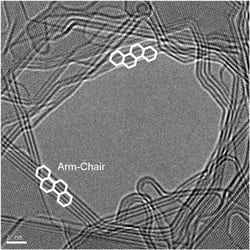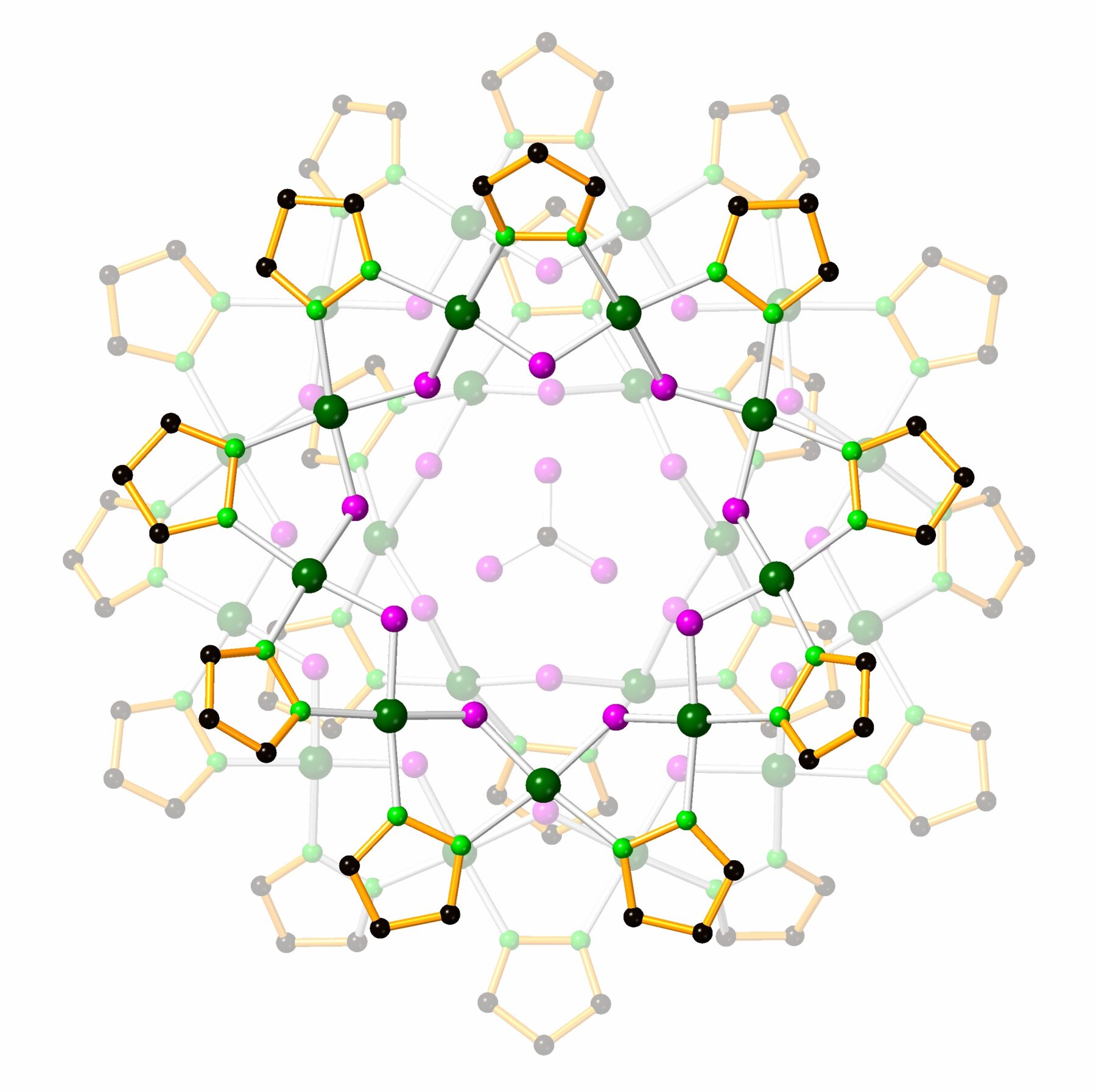
Still in its infancy, research and development at the nanoscale has already made an impact. Yet roadblocks to commercialization still exist.
Nanotechnology typically describes any material, device, or technology where feature sizes are smaller than 100 nanometers in dimension. However, this new and uncharted direction in research provides a large spark for new product and drug delivery development. To achieve these discoveries, scientists must rely on specialized instruments and materials to drive their experiments and analysis.
R&D Magazine surveyed leading instrument and materials vendors to gauge their opinion on nanotechnology’s growth and the challenges this science faces.
Nanotech trending
As researchers began working in nanoscale domains, most efforts focused on characterizing materials and understanding the relationships between their structure (composition) and properties. As scientists improved their understanding of these structure-property relationships, “their focus shifted to relationships between structure and function,” says Jens Greiser, VP/CTO,FEI Co., Hillsboro, Ore. To achieve this, microscopy and instrument vendors realized they would first have to make it easy to see structures at the atomic scale. For example, transmission electron microscopes (TEMs) have been used for years to characterize the size and shape of nanoparticles, but until aberration-corrected optics became commercially available, TEM could not clearly visualize atomic structures at the particle surface. With this added analytical capability, researchers could begin to establish a relationship between the structure of a nanoscale feature and its properties and function.
While characterization tools have strengthened, so have the actual use of nanomaterials. Over the past several years, some of the most dramatic advances in nanotechnology have come from new applications resulting from the development and modification of nanoscale-enhanced materials; thus the trend of movement from conceptual nanoengineered products to real-world applications.
The semiconductor industry has manufactured nanoscale features for many years, but beyond this industry many commercial nanotechnology-enabled products have integrated nanomaterials as passive components.
“Another trend is the transition from passive to active devices incorporating nanotechnology,” says Mike Nelson, CTO at NanoInk, Skokie, Ill. It’s been estimated, according to Nelson, that in the last decade nanotechnology has provided solutions for about 50% of new projects in energy conversion, energy storage, and carbon encapsulation. Also, in 2010, 15% of advanced clinical diagnostics and therapeutics were nanotechnology based.
Nanomedicine and energy are leading applications of nanotechnology, says Nelson, along with many of the other vendors surveyed, and represent two of the most important research areas.
Jeremy Warren, CEO, NanoSight, Salisbury, U.K., identifies an increasing emphasis on bionanotechnology as a trend he sees as the inherent complexity and heterogeneity of biological nanoparticles make increasing demands on characterization technologies. In biotechnology and life science applications, incorporation of nanoparticles as part of biosensing and drug delivery systems has taken off. Used in conjunction with biological systems, nanomaterials have applications in the early detection and treatment of various diseases, particularly cancer.
“Novel nanomarkers that can identify and visualize cancer cells can help diagnose malignancy without invasive biopsy procedures,” says Natasha Erdman, FE-SEM product manager, JEOL USA, Peabody, Mass. Metal-oxide nanoparticles can bind to antibodies that identify specific receptors and provide contrast for imaging with magnetic resonance imaging (MRI) or computed tomography (CT). Since 2010, two nanotechnology-based cancer drugs have passed regulatory scrutiny and are on the market—Doxil and Abraxane, according to the National Cancer Institute’s Alliance for Nanotechnology in Cancer. In recent years, the FDA approved numerous Investigational New Drug applications for nanoformulations, enabling clinical trials and further possibilities for nanomedicine.
Also, nanotechnology continues to find new roles in energy, from nanostructures used to make light-emitting diodes (LEDs) more efficient and enhance solar cell performance, to nanomaterials in advanced energy storage devices. Current developments involve modification of solar film structures with dopants to improve their efficiency, as well as understanding nanopore connectivity in gas shale for natural gas exploration.
“Our current research is in the area of coatings that can assist the oil and general well drilling industry,” says Brian Doud, general manager, Powdermet Inc., Euclid, Ohio. “We’ve developed antifriction and anticorrosive materials that can be applied to the inside of oil well pipe before they’re sold to the drilling company. These materials can take the heat and rigor of the drilling process, while extending the life of the down-hole pipe and improving the safety of the well.”
Nanotechnology’s hand in energy
While nanotechnology use in biomedical applications has grown, some of the strongest innovations he sees in nanotechnology are related to energy storage and production, according to Erik Novak, director of advanced development, Bruker NanoSurfaces Division, Santa Barbara, Calif. “We have customers designing specialized structures that increase the capacity and durability of next-generation batteries, while others are using nanotechnology to create devices that are more energy efficient.”
The Latest Bing News on:
Nanotechnology
- Tel Aviv University’s Professor Lihi Adler-Abramovich shares her innovative dental researchon May 9, 2024 at 6:31 am
Abramovich, Ph.D, is the principal investigator at Tel Aviv University’s Department of Oral Biology, The Goldschleger School of Dental Medicine, Faculty of Medical & ...
- Federico Rosei: international recognition for a researcher at the forefront of his fieldon May 8, 2024 at 10:02 am
INRS professor recognized for international research and mentoring efforts in nanotechnology. Federico Rosei, a professor at the Institut national de la recherche scientifique (INRS) in materials ...
- European Dev Fund to Foment Global Semiconductor, Nanotech Innovationon May 8, 2024 at 7:16 am
The pupose of a new EUR 300 million fund in a collaborative effort with imec; The areas of interest the fund will address; Information about Imec.xpand; Created ...
- GIST Researchers Develop Nanotechnology for Creating Wafer-Scale Nanoparticle Monolayers in Secondson May 8, 2024 at 1:37 am
GWANGJU, South Korea, May 8, 2024 /PRNewswire/ -- The nanoscale materials present us with astonishing chemical and physical properties that help materialize applications such as single molecular ...
- Nanotechnology Market on a Growth Trajectory: Forecasted to Reach USD 33.63 Billion by 2030on May 8, 2024 at 12:14 am
Allied Market Research, titled, “Nanotechnology Market By Type, and Application: Global Opportunity Analysis and Industry Forecast, 2021–2030,” the global nanotechnology market size was valued at ...
- Researchers develop nanotechnology for creating wafer-scale nanoparticle monolayers in secondson May 7, 2024 at 1:17 pm
Nanoscale materials present us with astonishing chemical and physical properties that help materialize applications such as single molecular sensing and minimally invasive photothermal therapy—which ...
- Nanotechnology in Therapeuticson May 6, 2024 at 4:59 pm
Nanomedicine. 2012;7(8):1253-1271. Although passive targeting approaches form the basis of clinical therapy, they suffer from several limitations. Ubiquitously targeting cells within a tumor is ...
- 'Quartet Nanocage' vaccine found effective against coronaviruses that haven't even emerged yeton May 6, 2024 at 6:38 am
Researchers have developed a new vaccine technology that has been shown in mice to provide protection against a broad range of coronaviruses with potential for future disease outbreaks—including ones ...
- The Role of Nanotechnology in Air Purification Advancementson May 6, 2024 at 2:49 am
The pervasive challenge of air pollution poses significant hurdles, inflicting profound adverse impacts on public health and ecosystems. This challenge is compounded by the presence of harmful ...
- Imec.xpand raises $320M for fund to invest in semiconductors and nanotechnologyon May 2, 2024 at 7:04 am
Imec.xpand, a chip and nanotech-focused venture capital fund, announced the launch of a new $320 million fund today.
The Latest Google Headlines on:
Nanotechnology
[google_news title=”” keyword=”Nanotechnology” num_posts=”10″ blurb_length=”0″ show_thumb=”left”]
The Latest Bing News on:
Bionanotechnology
- Will Heart Valve Tissue Engineering Change the World?on April 14, 2024 at 5:00 pm
A particularly exciting possibility is the generation and design of matrices through nanotechnology, using atoms and chemical methods to imitate biological material, (bionanotechnology ...
- New synapse type discovered through spatial proteomicson March 29, 2024 at 8:21 am
head of the Molecular Imaging and Bionanotechnology research group at MPI of Biochemistry and holder of the Chair of Molecular Physics of Life at LMU. By providing a detailed view of the location ...
- Nanosurgical tool could be key to cancer breakthroughon March 6, 2024 at 11:18 am
He added, "This work is the result of a collaborative effort with my colleagues and co-leads Dr. Chalmers Chau, Research Fellow in Bionanotechnology in Leeds' School of Electronic and Electrical ...
- PhD Candidate in Biophysics / Bionanotechnologyon February 17, 2024 at 12:16 am
For a position as a PhD Candidate, the goal is to obtain a doctoral degree. Are you a passionate researcher? Do you have a MSc degree in Biophysics, Nanoscience applied within biology or equivalent?
- Dream Bigon April 30, 2022 at 4:59 pm
Other upcoming partnerships include a major initiative with the Feinberg School of Medicine for a two-day spring bionanotechnology institute. A patient walks into a physician's office after receiving ...
- Faculty Vote to Launch Engineering Degree Programon September 20, 2021 at 7:41 am
“Our engineers are going to be ideally suited to work at a startup company on a product that doesn’t exist yet, blending biology, physics, computer science and bionanotechnology,” Fraden explains.
- How Does Nanotechnology Work?on August 17, 2020 at 12:25 pm
One result is the hybrid field of nanobiotechnology (also used are the terms bionanotechnology, biomedical nanotechnology or nanomedicine) that uses biological starting materials, biological design ...
- Nanotechnology Examples and Applicationson August 2, 2020 at 8:28 pm
Although the integration of nanomaterials with biology has led to the development of diagnostic devices, contrast agents, analytical tools, therapy, and drug-delivery vehicles, bionanotechnology ...
- Interdisciplinary Research Facilitieson July 25, 2019 at 12:40 pm
bionanotechnology and nanomedicine; science, technology, engineering and mathematics (STEM) learning; and other areas. The Eli Lilly Endowment provided generous initial funding for the centers and ...
- Flexible Thinking, Expansive Ideason November 22, 2016 at 10:50 am
Rogers leads the new Center for Bio-Integrated Electronics, part of the Simpson Querrey Institute for BioNanotechnology housed in the new Louis A. Simpson and Kimberly K. Querrey Biomedical Research ...
The Latest Google Headlines on:
Bionanotechnology
[google_news title=”” keyword=”bionanotechnology ” num_posts=”10″ blurb_length=”0″ show_thumb=”left”]










